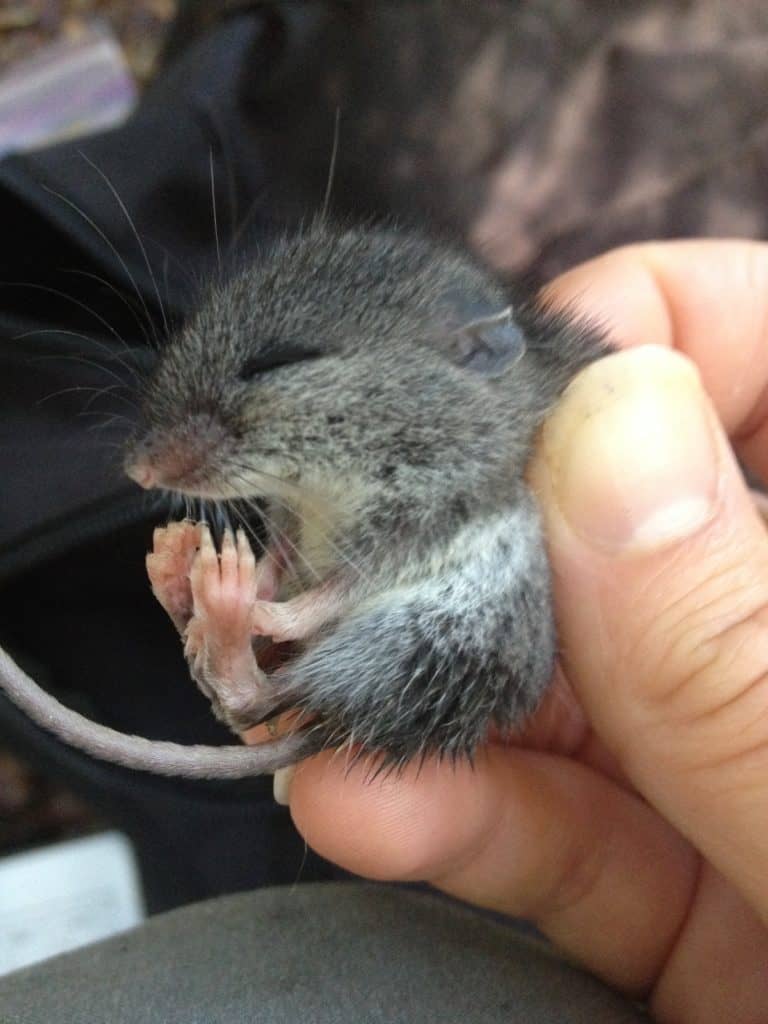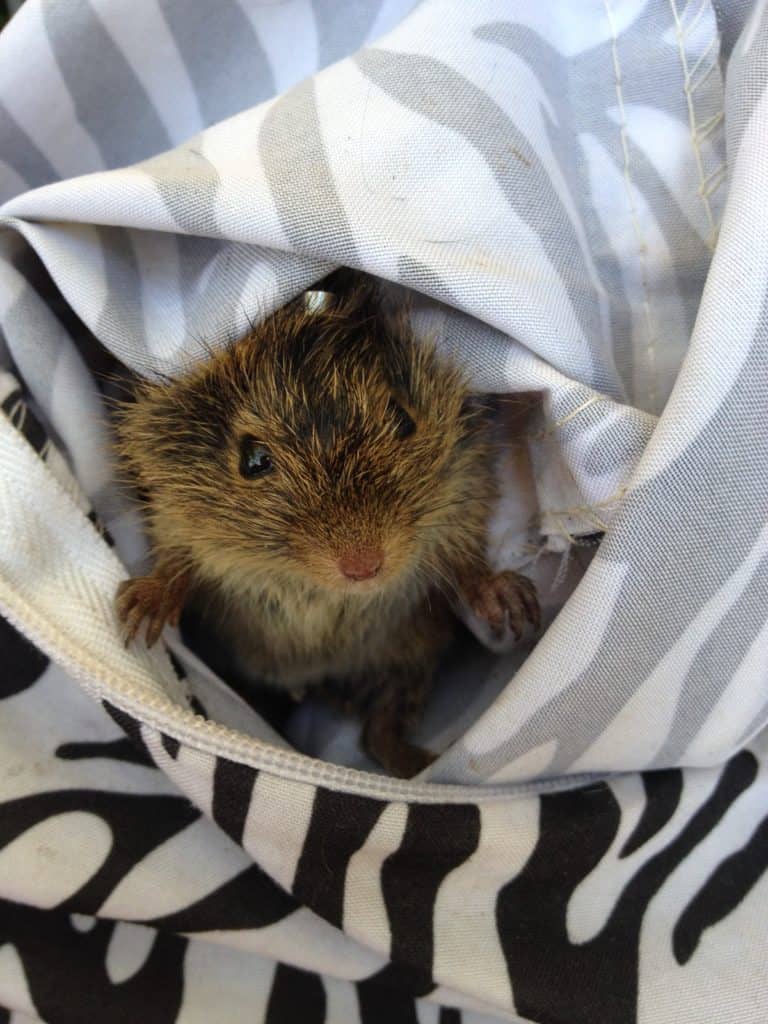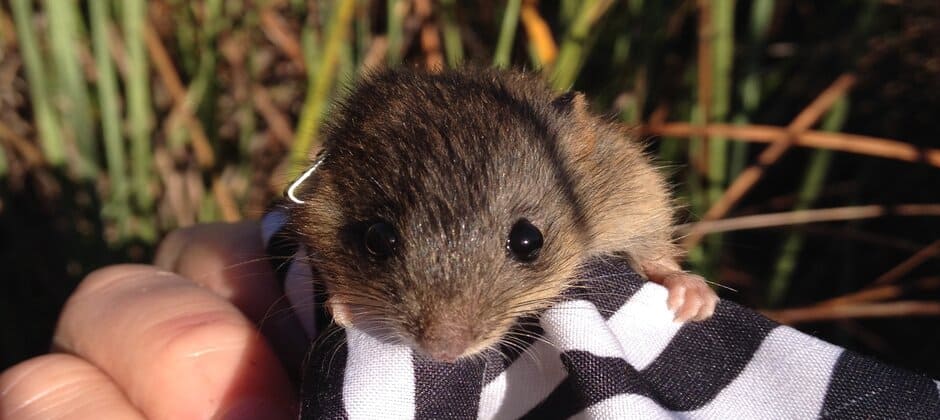Share this article
Small mammals’ presence could indicate healthy Everglades
Marsh rice rats may be good indicators of a properly restored wetland ecosystem in the Florida Everglades.
The rats’ presence can tell land managers whether water management plans are working properly, researchers believe.
“In the Everglades, our big goal is to get the water right,” said Stephanie Romañach, a research ecologist at the U.S. Geological Survey and the lead author of a study published recently in Restoration Ecology. But while some studies have looked at the presence of species like American alligators (Alligator mississippiensis) or wading birds as indicators of a healthy wetland in south Florida, relatively little research has been conducted on small mammals there.

A baby cotton mouse. Courtesy of USGS
Romañach and her colleagues set out to measure the presence and density of small mammals like the marsh rice rat (Oryzomys palustris), hispid cotton rat (Sigmodon hispidus), and cotton mouse (Peromyscus gossypinus) in Picayune Strand State Forest in the western part of the Everglades. From 2014 to 2016, they set out traps and checked them every day for one-week periods. They did this four times a year, both in restored wetland areas and in drier areas.
Their traps captured seven species of small mammals, including the three they were analyzing as well as spotted skunks (Spilogale putorius) and other rodents.
“That was really neat,” Romañach said.
Of the three species they monitored, marsh rice rats responded most positively to the presence of water. Those rodents turned up more often in the second year of study in areas where wetlands had been restored.
“We started seeing it when the changes had been made on the landscape,” Romañach said.

Hispid cotton rats like this juvenile and cotton mice appeared more often in drier conditions. Courtesy of USGS
The other two species, cotton rats and cotton mice, actually turned up in higher numbers in drier areas — something the researchers expected given the ecological niches those species prefer.
Romañach and her team are now working on repeating their work in Everglades National Park, where she’s interested to see how other factors may be affecting small mammal abundance.
In Picayune, for example, invasive Burmese pythons (Python bivittatus) that prey on many small mammal species hadn’t yet made inroads, but Everglades National Park is full of the reptiles. In the southeast of the state, the snakes are threatening small mammal species like the Key Largo cotton mouse (Peromyscus gossypinus allapaticola) and the Key Largo woodrat (Neotoma floridana smalli), Romañach said.
Header Image: A juvenile marsh rice rat captured as part of the researchers’ surveys. Courtesy of USGS








